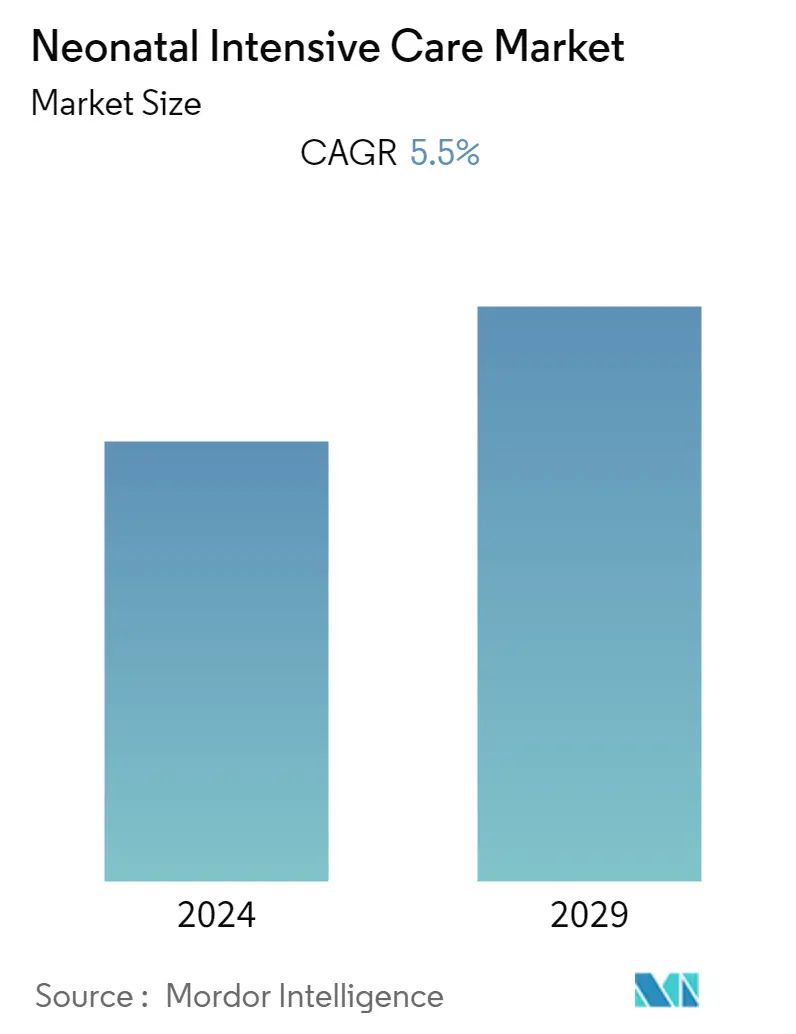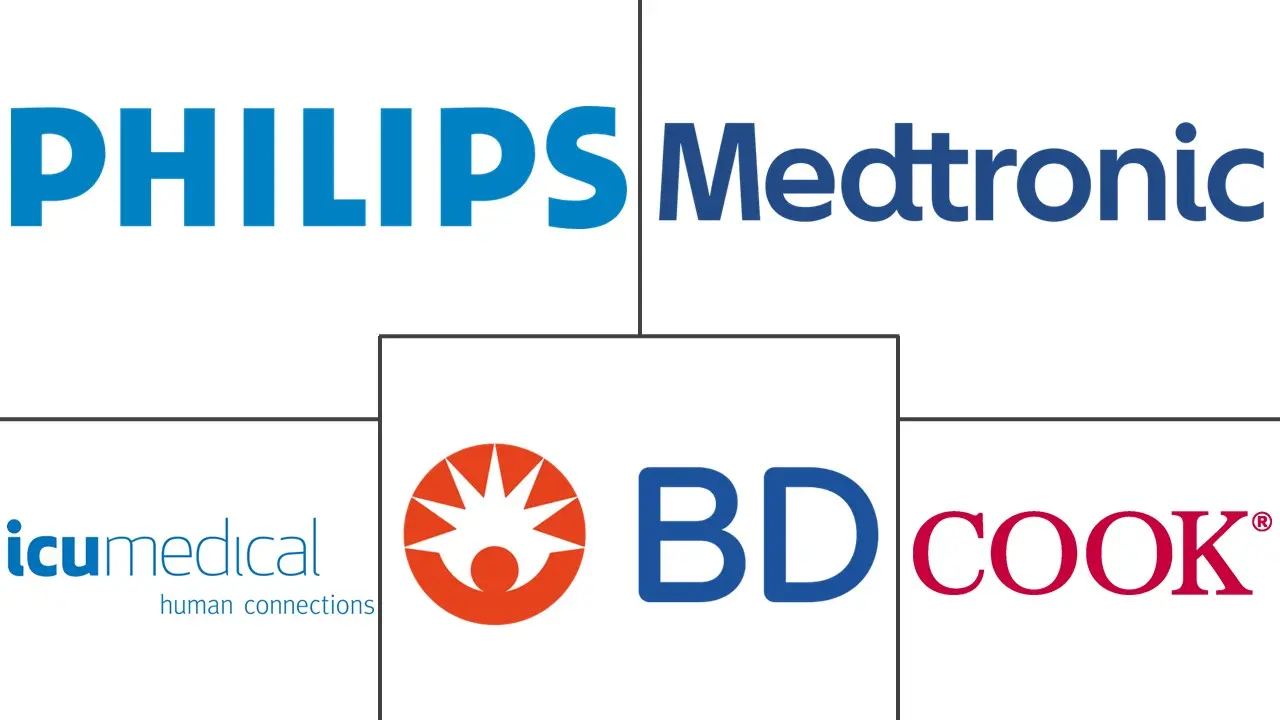Market Size of Neonatal Intensive Care Industry

| Study Period | 2019 - 2029 |
| Base Year For Estimation | 2023 |
| CAGR | 5.50 % |
| Fastest Growing Market | Asia-Pacific |
| Largest Market | North America |
| Market Concentration | Low |
Major Players
*Disclaimer: Major Players sorted in no particular order |
Need a report that reflects how COVID-19 has impacted this market and its growth?
Neonatal Intensive Care Market Analysis
The neonatal intensive care market is expected to register a CAGR of 5.5% over the forecast period.
COVID-19 had a significant impact on neonatal intensive care unit services. To stop the spread of COVID-19 many services relating to neonatal care were delayed. Additionally, hospitals were under pressure to treat COVID-19 patients, which was one of the factors preventing hospitals from offering neonatal intensive care services. For instance, as per the report published by Research Square, in February 2022, the average number of home deliveries attended by Skill Birth Attendants (SBA) in 2021 was 15,491. Furthermore, according to a study published by the American Academy of Pediatrics, in November 2021, there is a connection between COVID-19 and multisystem inflammatory syndrome in children (MIS-C). Scientists worldwide, including pediatric specialists, were working together to understand MIS-C and how best to diagnose and treat it. Children who become ill with MIS-C should be treated in the hospital, according to the CDC. Furthermore, according to an article published by Frontiers Media S.A., in February 2021, the mitigation strategies adopted to manage the pandemic upset care delivery for high-risk newborns and their families, and the mental health legacy of the pandemic was endured by both NICU staff and family members long after the acute phase. Even though the market is gradually stabilizing as COVID-19 cases are declining, there is still fear among people regarding infection, which is expected to impact the market's growth.
The rising incidence of preterm births, increasing prevalence of chronic diseases among newborn babies, and technological advancements in neonatal intensive care devices are the factor attributed to the growth of the market over the forecast period. For instance, as per the systemic review published by the International Journal of Contemporary Pediatrics, in September 2021, the world's highest prevalence of low birth weight (LBW) was found in South Asia. More than half of LBW babies worldwide, 15% of all births come from Asia. Additionally, as per the WHO, in November 2022, an estimated 15 million babies globally are born prematurely every year which accounts for more than 1 in 10 babies. These factors have increased the market demand for neonatal intensive care.
Furthermore, hospitals and neonatal care units are focused on improving neonatal care with more sophisticated systems, and adopting these technological procedures boosts market growth. For instance, in March 2021, Florida Perinatal Quality Collaborative launched an infant health quality improvement initiative PAIRED focusing on improving family-centered care in participating Florida NICUs. Hence this kind of technological advancement boosts market growth.
The factors such as the rising incidence of preterm births, increasing prevalence of chronic diseases among newborn babies, and technological advancements in neonatal intensive care devices, the neonatal intensive care market is likely to grow over the forecast period. However, lack of awareness and economic constraints in developing countries and decreasing birth rates in developed countries restrain the market's growth.
